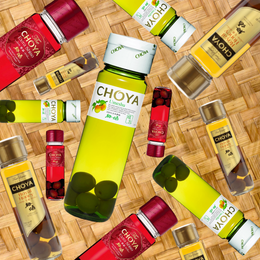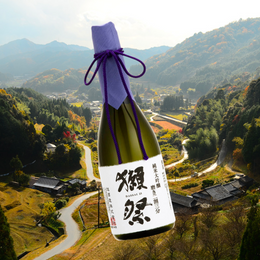
Who doesn’t love a glass of vino? The world of wine can be a fun rabbit hole to dive into, with a wide array of different wine styles and grape varietals to explore! Yet, it can nonetheless be confusing to navigate the wine bar as a beginner. So today, let's break down the six main styles of wine - how they're made, their common flavour profiles, and famous varietals of each style. Grab your glass and let's get pouring!
1. Red Wine
Red Wine is probably the most well-known of the wine styles, and its usually among the first wines that every new wine drinker interacts with. Most people think what makes a red wine is that it’s made from red skinned grapes, but beyond that, what truly differentiates red wine from other wines is the fact that the grape skin is left on to soak in the grape juices and seeds during fermentation.
The presence of the grape skins during fermentation is a crucial factor here, as the grape skins contain tannins, which are naturally occurring compounds, that results in more dryness in the final wine. The skins being kept on is also what gives red wine it’s robust colour.
Typical tasting notes: Red wine is typically described as being more dry with leathery, dark fruit and earthy notes. It’s recommended to be consumed with red meats or foods with are high in fat, as it richer-bodied nature helps it stand up well to more intense flavors. Conversely, it’s generally discouraged to pair red wine with seafood, as the tannins in the drink might accentuate any fishy flavours.
Famous red wine varietals: Cabernet Sauvignon, Merlot, Syrah and Pinot Noir (originating from France), Garnacha and Tempranillo (originating from Spain).
2. White Wine
White Wine is also another highly popular style of wine, and is the most consumed by volume among the five styles. White wine is made from yellow or green skinned grapes, and there’s a certain “crushability” about it – a term used to refetence a really easygoing and drinkable wine.
This easy-drinking that white wines are known for is due to the fact that prior to fermentation, the wine makers remove the skins of the grapes. The lack of grape skins during fermentation reduces the level of tannins in the wine. This also lends to white wine being more delicate and floral.
Typical tasting notes: White wines are typically brighter and gentler, with more acidity and more floral, fruity notes. It’s generally recognized as an ideal wine pairing with fish, as the acidity neutralizes some of the fishy taste in seafood.
Famous white wine varietals: Chardonnay, Sauvignon Blance and Pinot Gris (originating from France), Riesling (originating from Germany), Garganega (originating from Italy)
3. Rosé Wines
Rosé sits somewhere between a red wine and a white wine. Like red wine, it’s made from red skinned grapes, and like red wine, the grape skins are also soaked and used during fermentation. However, the time in which the grape skins are left to soak during fermentation is much shorter than typically would be the case when making red wine. The shorter grape skin contact time is enough to impart a subtle pink tint you see in Rosé, but not enough to qualify it as a red wine.
Typical tasting notes: Rose tends to carry the same base notes as red wines, with red fruits, cherry and berry notes. However, Roses tend to taste more subtle, crisp and lighter bodied than red wines, with a balance of acidity and tannins. Roses can recommended to be paired with seafood, vegetables, cheeses.
4. Orange Wine
No, orange wine is not made from oranges! Rather, it’s actually a variation on Rosé. Put simply, Orange wine is Rosé if instead of red skinned grapes, you swap it out the base ingredient for yellow or green skinned grapes. Orange is to white wine what Rosé is to red wine.
While Orange Wine is a lesser known style of beer compared to the other five styles, the techniques for making orange wine have been traced back to over 5,000 years ago in the country of Georgia. Originally, orange wines would be fermented in an sealed earthenware jar called Qvevri.
Typical tasting notes: Orange wines tend to be dry with bold, nutty and honeyed aromas, and uniquely, a slight sourness to it. They have a balance of acidity and tannins, which allows it to be more versatile for food pairings as they can pair with both robust or tangy flavours.
5. Sparkling Wine
We can’t forget about Sparkling Wine, a fizzy, carbonated style of wine that’s a common fixture at parties and celebrations. Sparkling Wine is differentiated from other styles of wine in that sparkling wines goes through a second fermentation process, where they take on a fizzier effervescence in texture.
There are two main methods to make sparkling wine. The first is Méthode Champenoise, where the second fermentation happens within the bottle itself. While the second method is the Charmat method, or tank method, where wine goes through secondary fermentation in a large pressurized tank.
Typical tasting notes: Sparkling wine usually takes on the dominant flavors of the base wine varietals, ranging from dry to sweet, from floral to fruity. The common theme across them, however, is their bright, fizzy carbonation. Sparkling wines made via the Méthode Champenoise, such as champagne, tend to have more brioche-like, nutty notes, while those made via Charmat method tend to be more fruity.
Common sparkling wine types: Technically speaking, any wine base (red, white, Rose, orange, dessert) can be a base for secondary fermentation to become a sparkling wine. The most popular styles of sparkling wine are Champagne, which uses the Methode Champenoise and can only be produced in the Champagne region of France, as well as Prosecco, which uses the Charmat method and is typically produced across Italy.
6. Dessert Wine
Dessert wine is a style of wine whereby fermentation is cut short, resulting in more residual natural sugars being left unfermented in the finish bottle. Some dessert wine makers may also utilize other techniques to draw out more sweetness – such as dying out grapes on a straw mat to become raisins, vine freezing the grapes and even using rotten grapes that specially infected with the Botrytis cinerea fungus.
Some wine makers may add distilled spirits during fermentation to kill off the yeast and stop fermentation, leaving behind more residual sugars. This variant of wines are described as “fortified wines”, and include types like port wine, sherry and madeira.
Typical tasting notes: Despite the name, not all dessert wines are sweet. While they are generally a bit sweeter than your classic wines, some dessert wines can still contain some dryness, while others can range from subtly sweet to richly sweet.
Common dessert wine categories: Ice Wine (Germany), made from vine-frozen grapes. Fortified wines like Port Wine (Portugal), Sherry (Spain), and Madeira (Portugal). Straw Mat or Straw Wines, made from wine grapes that are laid out on straw mats to raisinate.
With love and vino,





